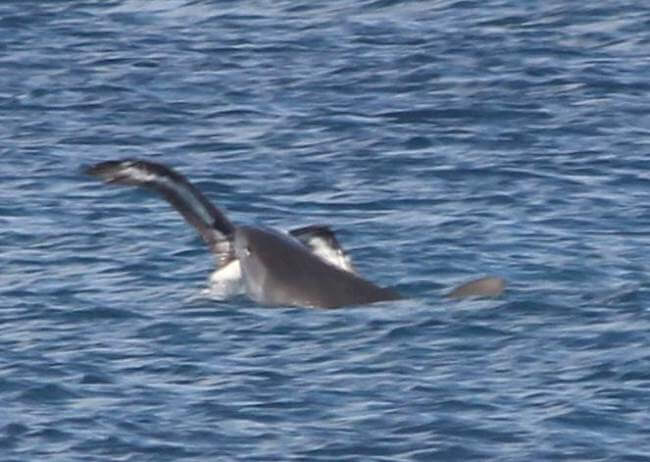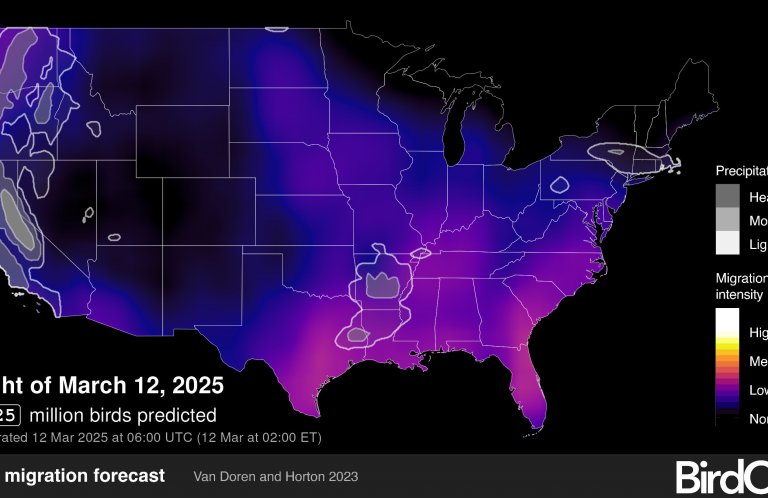Multi-tasking Millerbird Parents
August 12-25, 2013
Megan Dalton
For most of the last two weeks, we did not find any new Millerbird chicks, so our tally for the 2013 breeding season was stuck at 48. However, due to a very sneaky, very busy pair in the territory on the southern side of the core Millerbird habitat we call Sickly Sicyos (due to a lot of unhealthy looking viney Sicyos sp.), the total fledgling number is now the nice and clean number of 50! This is a great benchmark for the birds and the overall Millerbird translocation project, as we prepare to leave Laysan in three weeks.
Those two stealthy Millerbird parents have had us scratching our heads since June, when they built a lovely nest in a naupaka shrub but did not lay eggs. Since then we've seen a couple of signs that made us wonder if they were re-nesting in the same shrub, yet we could never find any definitive evidence. Most birds had paused all breeding activity in order to molt, and this was a relatively inexperienced pair, so we underestimated their potential. We were all pleasantly surprised earlier this week when Michelle saw the male with color band combo W/G:BK/B, bringing food to an enthusiastically begging, unbanded fledgling multiple times in the very same shrub where they had attempted to nest before. Another beggar was heard in a bush nearby, where the female with color band combo W/W:B/W (who is currently without a tail due to molting) was hanging out. Since they normally split up feeding duties between chicks, it made sense that there were at least two fledglings in this brood.
The pair's successful breeding during their period of molt is a testament to their perseverance, but also to the high-quality habitat offered by Laysan. There must be sufficient food items available to get them through the extremely energetically taxing time of re-growing all their feathers, while simultaneously staying in peak condition to reproduce and provide for their young. Amazing!
Nature Sighting of the Week

Although this doesn't look like it ends well for the Laysan Albatross, this lucky fledgling was able to escape the imminent jaws of a large tiger shark. Photo: Michelle Wilcox
Someone recently reminded us that it was Shark Week a few weeks ago, at least back in the land of cable television. Out here on Laysan, it seems like Shark Week has lasted over a month. You may have heard of the seasonal tiger shark migration throughout the Northwestern Hawaiian Islands to shallow waters surrounding albatross colonies. Around July and August, right when the majority of albatross chicks are making their first trek out to sea, large numbers of tiger sharks show up to chow down on the naïve and clumsy chicks.
On Laysan, attacks are usually seen in waters off the southern edge of the island, as well as in a southwestern bay fronting the large beach nicknamed The Sidewalk. Keeping this in mind, I was walking south from camp along the shore one day, periodically scanning the ocean and listening for any sudden splashes. When I hit The Sidewalk, I sat down and got out my binoculars and focused on a few birds out in the bay. The first bird I trained my eyes on got gulped down quickly by a rather large and sleek shark. Not five seconds later, a second nearby bird was also attacked. This time it took the shark three tries to actually seize the terrified albatross. I have to confess that my heart felt like it was racing and simultaneously breaking. I was thrilled to see such a real, raw, and essential act of nature—it isn't often that I find myself in the presence of such a powerful predator. On the other hand, we have spent nearly five months watching our albatross neighbors struggle to regularly provide for their chicks. A number of them don't seem to survive to fledging, so it was terribly sad to see these ones who are so close to making it traveling down the toothy gullet of a large shark. But obviously I'm biased, and I haven't spent months underwater watching all the sharks' struggles of survival. (Plus the albatrosses are cuter.)
In Other News on Laysan
An unknown species of duck was seen twice in the last two weeks. Because it was skittish and easily flushed from far distances, we were unable to get a good look at it except that it appeared dark colored and had a very short tail.
The lakeshore is once again bustling with shorebird activity as more Pacific Golden-Plovers, Ruddy Turnstones, and Wandering Tattlers arrive. Wedge-tailed Shearwater chicks are hatching in droves, Sooty Tern chicks are taking to the air, Brown Noddy chicks have begun to shuffle around on their little feet, and the Bonin Petrels have started working on their burrows in preparation for their breeding season. Red-footed Boobies and Great Frigatebird chicks continue to grow as they sit upon their stick nests; they are slowly replacing their down with body contour feathers and flight feathers. There are plenty of Red-tailed Tropicbird chicks underneath the vegetation, some old enough to fledge, others more recently hatched.
Join us in a couple of weeks for our final 2013 posting about the Millerbirds on Laysan.
 Megan Dalton is a Millerbird
Megan Dalton is a Millerbird
monitoring biologist on Laysan.



















































